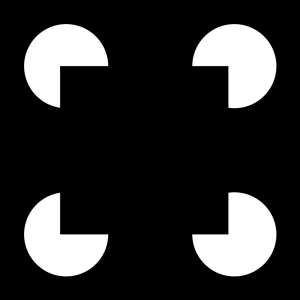Something I am really excited about that has come out of this project is the potential to not use a gallery when exhibiting my work. Continue reading Computer-mediated reality as art
Tag Archives: art
Learning to code creatively…
I am learning many new skills in this Synapse residency. For one, I have started learning creative coding using Matlab, and am loving it! I was interested to learn code can even be used to create poetry! Continue reading Learning to code creatively…
ANAT Residency Visit
Last week Vicki Sowry from ANAT came to visit the lab and see how the residency was progressing. Vicki was accompanied by Ash Tower, a PhD candidate at Uni SA who studies the lab experience in art/science residencies. Ash will be interviewing Ted and me in the near future for his PhD research project. Continue reading ANAT Residency Visit
Image Texture
I thought I’d also talk a little about what I am currently studying in terms of neuroscience and how it is different to my Synapse project. Continue reading Image Texture
Tech tweaks
So far, we have been experimenting with the technology to use in this project. We were planning to use Epson Moverio smart glasses, which are the standard in computer-mediated reality projects. However, it may be more efficient to use a smartphone that is hooked up to a headset. In effect, this would work in a similar way to the glasses.

Combining art and science
This Synapse residency has given me the chance to reflect a little more on art/ science collaborations. I have completed art/science residencies in the past, but this is the first one I have done since formally studying science. Having a background in science has helped enormously with this project. Of course, being able to understand the science of the field you are investigating makes a huge difference to the kind of work you can produce. Perhaps this is the way forward for Sci Art as a discipline. That is, as collaborations between science and art develop, both artists and scientists may find it beneficial to become better versed in the other field, rather than having a passing interest. While this takes more dedication to a subject, this could result in more discoveries being made by both artists and scientists which affect both fields. Rather than calling ourselves ‘artists’ or ‘scientists’, we could do better if we were a little of both.
The link below is an excellent paper on art and science as creative catalysts:
http://www.mitpressjournals.org/doi/abs/10.1162/LEON_a_01065#.V51-55N96L8
Occlusion issues
Throughout this project, it will be interesting to explore how objects in front of others may be processed differently. In the study of visual perception, this effect is known as ‘occlusion’.

While occlusion can get a little more complicated when the surfaces are translucent or textured, understanding the basics of occlusion has many practical applications. For example, a recent paper by Barbara Gillam provides an excellent account of occlusion issues in early Renaissance art: http://www.ncbi.nlm.nih.gov/pmc/articles/PMC3485794/
Kanizsa square
Another example of the brain ‘adding’ information is the Kaniza square illusion. For example, in the image below, people often perceive a black square on top of four white circles. Instead, this image could be easily seen as four white ‘pacman’ shapes. Yet, we are more likely to perceive the square shape. This effect is known as the perception of illusory contours, and is something of interest throughout this project.

Watercolour illusion
I find it fascinating that the brain can ‘add’ information to what we perceive. This is likely to be the case so we can make better sense of our visual world. Continue reading Watercolour illusion
Exploring ways of seeing
Something that excites me about studying the visual system is that much of what we experience when seeing is created internally. For example, the colours that we see do not exist out there in the world, but are generated by our brain. Our brain cells convert light into an electrical signal that we interpret as colour. In a sense, the world ‘out there’ is actually colourless. Continue reading Exploring ways of seeing